Collaborators
of Rubens
Rubens had many assistants and collaborators in his lifetime, especially after establishing his studio in Antwerp. In some instances, Rubens would jointly work with fellow masters to produce commissions. When it came to the pupils of his workshop, most of the identities of these student assistants were undocumented as the Guild of St. Luke did not mandate Rubens’ to register apprentices of his workshop. However, a handful of his pupils went on to achieve fame and successful careers as artists and are still known to us today.

Sir Anthony van Dyck, ca. 1640, Anthony van Dyck, Image Courtesy of National Portrait Gallery
Anthony Van Dyck
Van Dyck was one of Rubens’ most famed assistants and collaborators. He joined the Antwerp painter’s guild in 1617 and became an assistant of Rubens’ studio, whilst managing his own studio and cohort of pupils. Van Dyck was a prominent portraitist, but he was also multi-skilled and drew landscapes and designed engravings. He adopted techniques from Rubens’ workshop, such as drawing from live models when preparing sketches of large-scale commissions. He mastered Rubens’ signature style of painting dramatic and muscular bodies, and eventually developed his own unique baroque style. A large number of head studies and preparatory drawings in Rubens’ workshop are said to have been created by Van Dyck. In 1620, Rubens was commissioned to produce thirty-nine ceiling paintings and three altarpieces for The Jesuits of the Saint Ignatius Church. As his most talented student, Van Dyck led the commission and painted a significant portion of the ceiling paintings himself. Also in 1620, Van Dyck assisted Rubens in painting Christ on the Cross for the high altar of the Friars Minor Church in Antwerp. He remained Rubens’ assistant for two years and left the studio in 1620. After leaving the studio, the two masters would reunite in 1628, joined by Jacob Jordaens, to collaboratively create a set of altar paintings for the Antwerp Saint Augustine Church.
Jacob Jordaens
In 1607, Jordaens became a pupil of Adam van Noort, who was also the teacher of Rubens. In his early career, Jordaens was enrolled in the Guild of St. Luke as a watercolor artist. He later expanded his expertise to oil paintings and tapestry design. Although Jordaens was never enrolled as a student of Rubens, from the late 1610s onwards, Jordaens was employed as an assistant in Rubens’ workshop and continued to collaborate with Rubens on some of his later, major commissions. For example, Jordaens regularly assisted in reproducing large-scale versions of Rubens’ prints. In 1628, Jordaens collaborated with Rubens and Van Dyck to create a set of altar paintings for the Antwerp Saint Augustine Church. In 1634, he assisted Rubens in designing the triumphal entry of the Cardinal Infante Ferdinand. In 1637 – 1638, he was also an assistant in painting the decorative cycle for the Torre de la Parada in Madrid. Jordaens was acclaimed for his distinctive chiaroscuro and later led the Flemish Baroque after the death of Rubens in 1640 and the death of Van Dyck in 1641. He even completed several paintings by Rubens that were left unfinished.
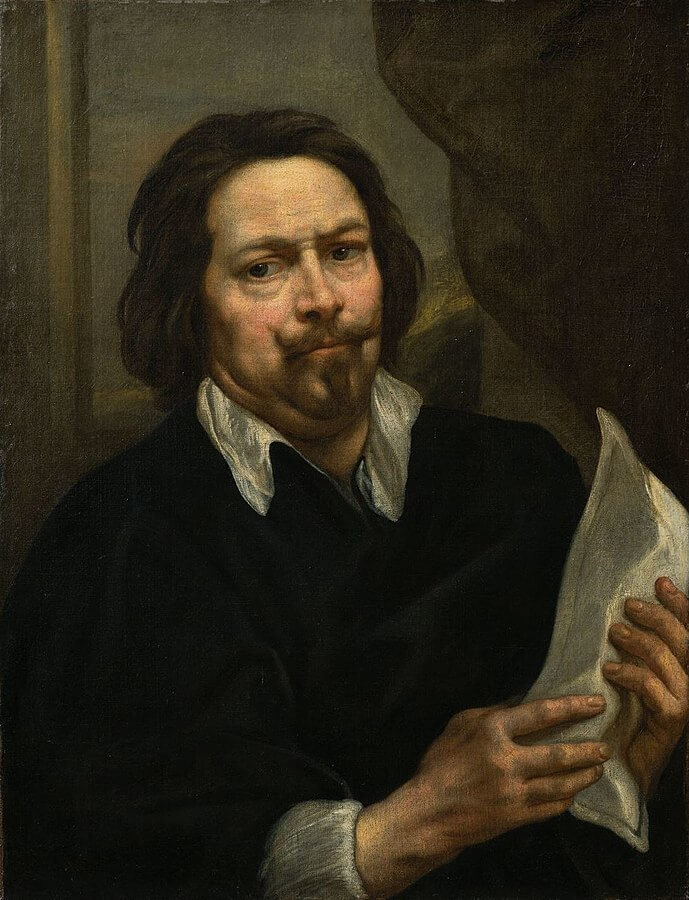
Self-Portrait, Jacob Jordaens, ca. 1648 – 1650, Image Courtesy of King Baudouin Foundation

Frans Snyders, Anthony Van Dyck, ca. 1620, Oil on Canvas, Image Courtesy Henry Clay Frick Bequest
Frans Snyders
Frans Snyders was a Flemish painter, trained under Pieter Brueghel the Younger and Hendrick van Balen. Independently, Snyders specialised in animals and hunting scenes and was renowned for his dynamisms and his skill in textural details. He joined the Guild of St. Luke in 1602 and befriended Rubens when he returned from Italy in 1608. Snyders remained a close friend of Rubens till his death and was the executor of Rubens’ will. Snyders was not a member of Rubens’ workshop but the two masters collaborated frequently. Rubens, who specialised in human figures, would paint the people of the piece, while Snyders would paint the animals and still life. Rubens and Snyders had a long and prolific working relationship. Their first documented collaboration is The Recognition of Philopoemen, with Rubens contributing a preliminary sketch and Snyders executing the majority of the final composition.
Some other notable Rubens and Snyders collaborations include:
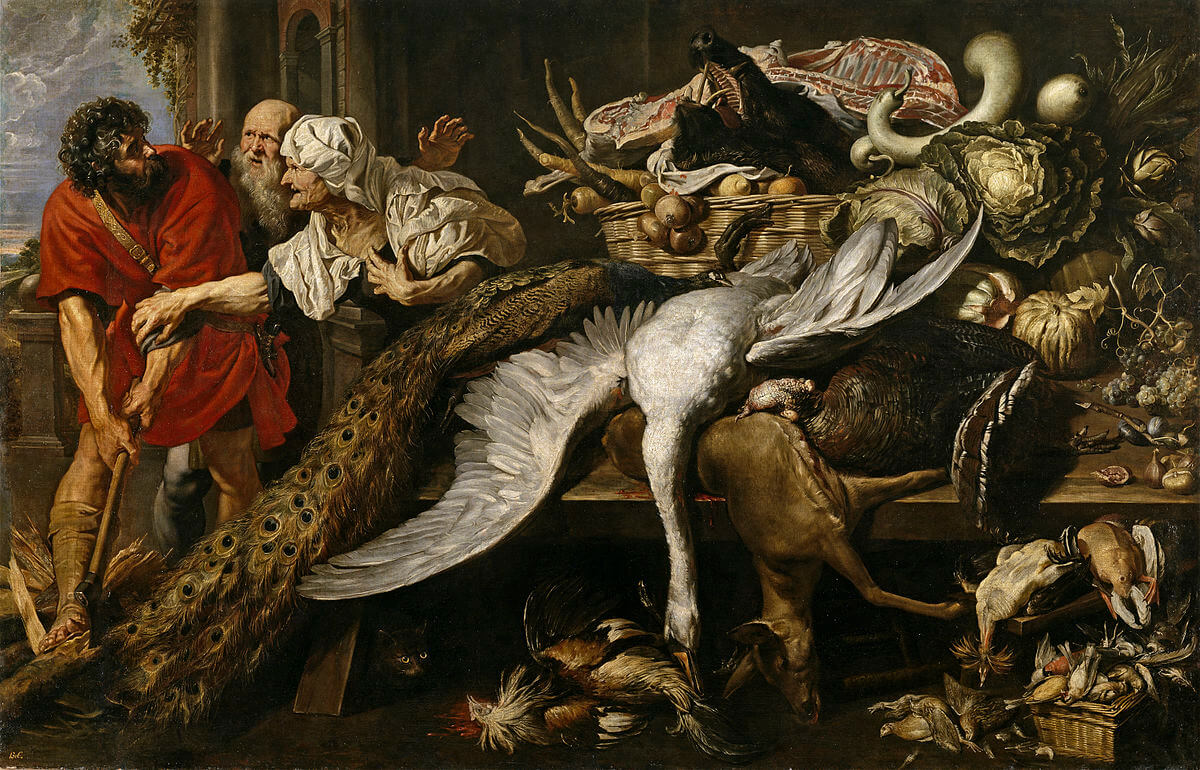
The Recognition of Philopoemen, Peter Paul Rubens and Frans Snyders, ca. 1609, Image Courtesy of Museo Del Prado

Prometheus Bound, Peter Paul Rubens and Frans Snyders, ca. 1611 – 1618, oil on canvas. The eagle was likely painted by Snyders.

The Head of Medusa, Peter Paul Rubens and Frans Snyders, ca. 1617 – 1618, oil on canvas. Image Courtesy of Kunsthistorisches Museum. Snyders is attributed as the painter of the snakes and insects.
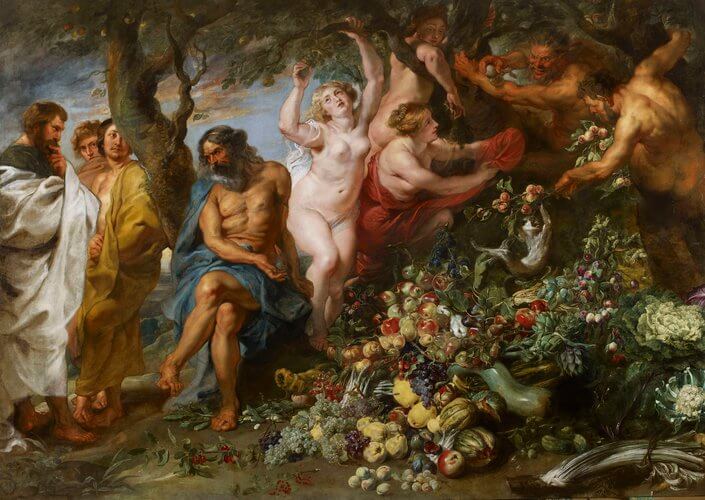
Pythagoras Advocating Vegetarianism, Peter Paul Rubens and Frans Snyders, ca. 1628 – 1630, oil on canvas. Image Courtesy of Royal Collection Trust. Snyders is known to have painted the fruit and vegetables first before Rubens executed the figures
.jpg)
Ceres and Two Nymphs, Peter Paul Rubens and Frans Snyders, ca. 1615 – 1617, oil on canvas. Image Courtesy of Museo Del Prado. Snyders depicted the fruit, monkey and birds.
Jan Brueghel the Elder
Another prominent Antwerp painter and a Flemish contemporary of Rubens, Jan Brueghel the Elder was renowned for his detailed renditions of landscapes and still life. His expertise was vast and he painted prolifically in many genres, such as history paintings, allegorical scenes, hunting scenes and flower garland paintings. He was one of Rubens’ closest collaborators and contributed imagery of the natural world in a notable number of joint works with Rubens. Shortly after Rubens was established as a master in the Guild of St. Luke, Rubens and Brueghel embarked on their first collaboration in 1598: The Battle of the Amazons. This painting was one of the first works in his oeuvre of such monumental scale and set the precedent for Rubens and Brueghel’s later collaborations. As Rubens and Brueghel developed their joint ventures, each work reflected a strong sense of reciprocity, codesign and shared practice. At times, Rubens and Brueghel would take on elements that were outside of their usual speciality, with Rubens painting the animals and Brueghel the history figures. When Rubens established his workshop, their collaborations became increasingly industrious, sometimes involving their respective assistants to produce works of impressive ambition. Until Brueghel’s sudden death in 1625, the two masters maintained a close friendship and working relationship. Some significant joint works include:

Family of Jan Brueghel the Elder, ca. 1613, Peter Paul Rubens, oil on panel. Image Courtesy of Courtauld Institute of Art. Jan Brueghel the Elder is depicted in the upper left of the painting.

The Battle of the Amazons, 1598 – 1600, Peter Paul Rubens and Jan Brueghel the Elder, oil on panel. Image Country of the Sanssouci Picture Gallery. Rubens and Brueghel divided the panel in half, with Rubens responsible for painting the frenzy of warriors, and Brueghel responsible for the general atmospheric landscape of the scene.
_-_The_Return_from_War-_Mars_Disarmed_by_Venus.jpg)
The Return from War: Mars Disarmed by Venus, ca. 1610 – 12, Peter Paul Rubens and Jan Brueghel the Elder, oil on panel. Image Courtesy of the J. Paul Getty Center. This painting is one of Rubens and Brueghel’s first collaborations after Rubens returned from his travels in Italy. Depicting the aftermath of a war-torn allegory, Brueghel produced abundant depictions of armour and architecture in this painting. Unseen to the naked eye, X-rays reveal that Brueghel had also painted furniture pieces into the scene. Upon receiving the painting, Rubens later painted over the furniture pieces, shifting the focal point of the composition from the still life to the two figures of Mars and Venus.
The Feast of Acheloüs, ca. 1614 – 15, Peter Paul Rubens and Jan Brueghel the Elder, oil on panel. Image Courtesy of the Metropolitan Museum of Art. Brueghel drew the fantastical landscape, with impressive cave formations, rivers and aquatic life surrounding the banquet. The figures exemplify Rubens’ signature physicality and dynamic postures.

The Garden of Eden with the Fall of Man, ca. 1617, Peter Paul Rubens and Jan Brueghel the Elder, oil on panel. Image Courtesy of Mauristhuis. The animals in this painting exhibit stylistic similarities to Brueghel’s other depictions of God’s creatures in his paradise scenes. It is likely that the piece was mostly composed by Brueghel with Rubens contributing to the paintings once the preliminary sketches were complete. The painterly execution of human skin in this painting suggest Rubens was mainly responsible for the figures of Adam and Eve.

Madonna in a Flower Garland, ca. 1612, Peter Paul Rubens and Jan Brueghel the Elder, oil on panel. Image Courtesy of the Louvre Museum. Flower garlands were a signature innovation of Brueghel and within this painting, Brueghel painted an elaborate landscape with animals around a depiction of the Virgin and Christ by Rubens. This composition was highly popular, causing Rubens and Brueghel to create several similar versions of the Virgin and Child surrounded by a flower garland.
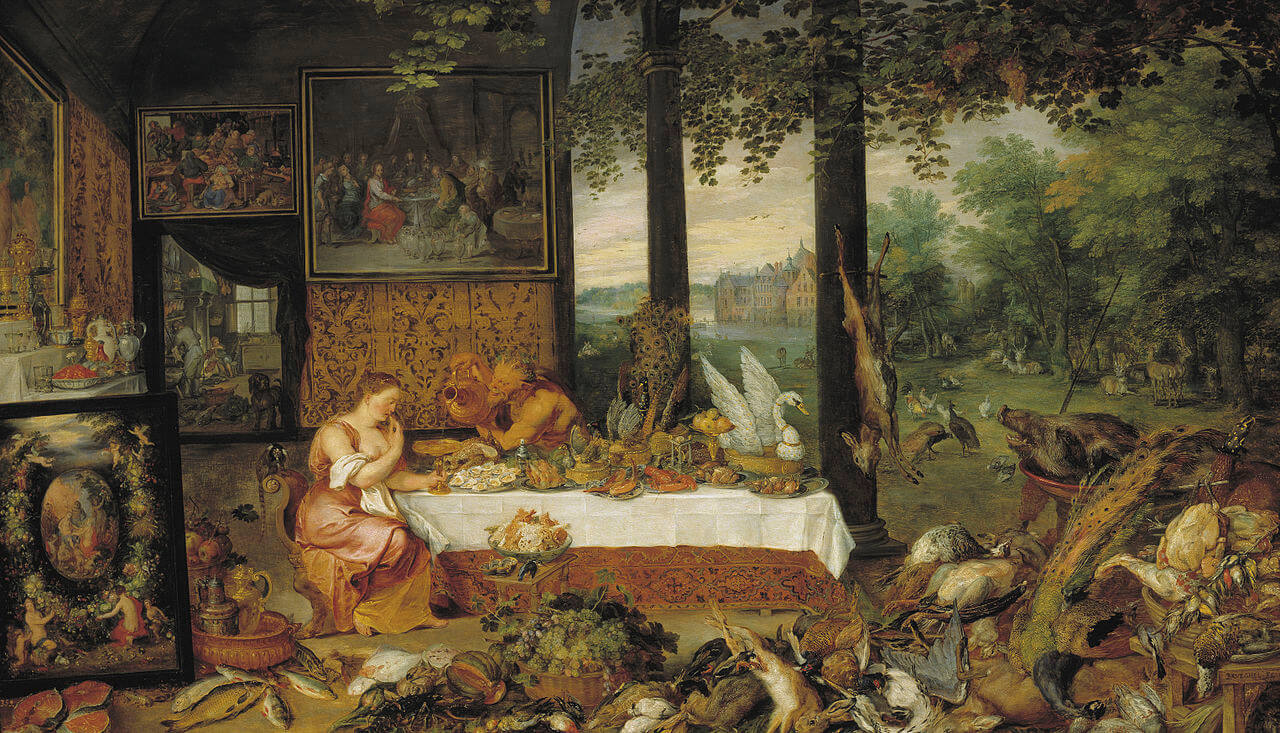
Allegory of Taste, ca. 1618, Peter Paul Rubens and Jan Brueghel the Elder, oil on panel. Image Courtesy of the Museo del Prado.
Five Senses Series, 1618, Peter Paul Rubens and Jan Brueghel the Elder, oil on panel. A series of five panels depicting allegories of the senses, Rubens and Brueghel constructed female personifications surrounded by elaborate scenery of landscapes, animals, mythological creatures and still life. Brueghel was known to have painted the setting of each work before giving it to Rubens who painted in the female figures, accompanied with a mythological creature like a putto or satyr.
Jan Brueghel the Younger
The son and heir of Jan Brueghel the Elder, Brueghel the Younger trained under Brueghel the Elder and adopted much of his father’s techniques and mannerisms. He inherited his father’s workshop after Brueghel the Elder’s sudden death in 1625. Brueghel the Younger then reproduced numerous versions of his father’s most successful joint works with Rubens, such as the Five Senses Series and the flower garland pictures. There is no substantial evidence that Brueghel the Younger continued a working relationship with Rubens, certainly not on the same collaborative level as his father.
Abraham van Diepenbeeck
Van Diepenbeeck came from a family of glassmakers and was a Master glass painter in the Guild of St Luke. He specialised in painting stained-glass windows, oil sketches, and designs for books and tapestries. It is unclear if he was ever a pupil of Rubens’ workshop however Van Diepenbeeck was employed by Rubens to help produce designs for commissions. In 1627, Van Diepenbeeck, under the instruction of Rubens, created a design drawing for the manuscript Vitae Patrum by Heribertus Rosweyde. Around 1632, Van Diepenbeeck was employed by Rubens to produce designs of prints and drawing reproductions of Franco-Italian artworks that would then be used as reference material by painters and printmakers. Some notable copies by Van Diepenbeeck include:
Pietà, Abraham van Diepenbeeck after Niccolo Dell’Abbate, chalk drawing.
Neptune Unleashing the Tempest, Abraham van Diepenbeeck after Francesco Primaticcio, chalk drawing.
The Companions of Ulysses Opening the Bag of Winds, Abraham van Diepenbeeck after Francesco Primaticcio, chalk drawing.
Van Diepenbeeck continued to have a working relationship with Rubens until 1640 when Rubens died. His independent works thereafter continued to show strong influences from Rubens.
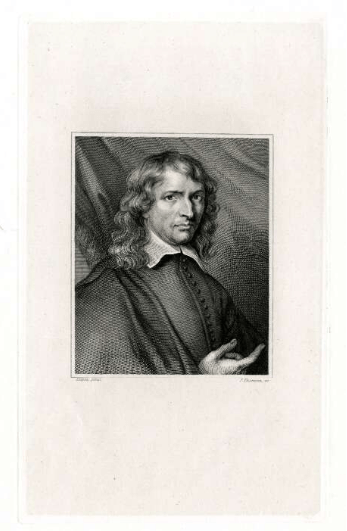
Portrait of Abraham van Diepenbeeck, 1826, P. Thompson after Paulus Pontius, Image Courtesy of British Museum.
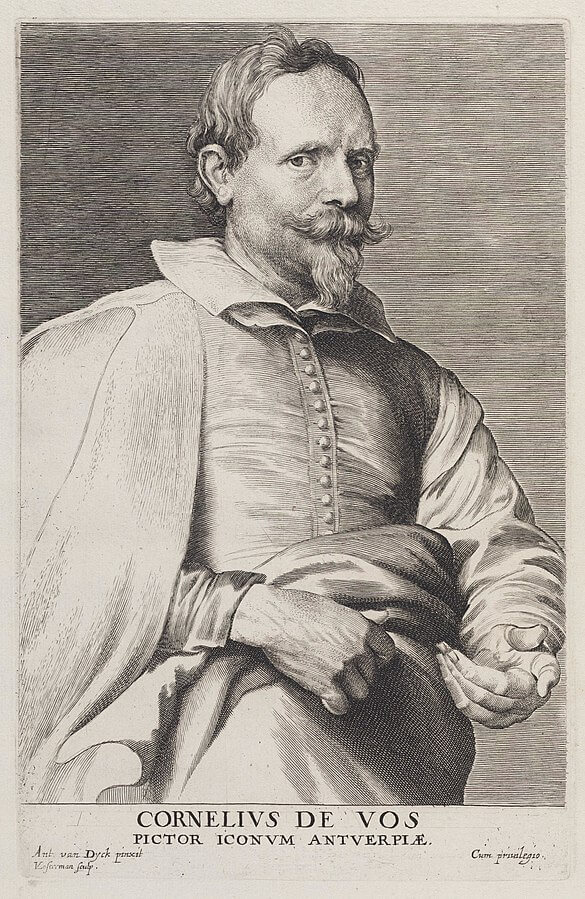
Portrait of Cornelis de Vos, ca. 1632 – 1641, Anthony van Dyck and Lucas Vorsterman the Elder, engraving. Image Courtesy of Teylers Museum.
Cornelis de Vos
De Vos was born in Hulst and moved to Antwerp in 1596, where he became the apprentice of David Remeeus. He enrolled as a master in the Guild of St. Luke in 1608. He worked alongside Rubens, Jordaens and Van Dyck to execute a series of paintings commissioned for the church of Saint Paul in Antwerp. In 1634, De Vos collaborated with Jordaens to assist Rubens in designing the triumphal entry of the Cardinal Infante Ferdinand. In 1636, he also assisted Rubens in executing the decorative cycle for the Torre de la Parada in Madrid. Throughout his career, De Vos was a famed portraitist and renowned for his exceptional attention to detail.
Paul de Vos
The younger brother of Cornelis de Vos, Paul de Vos was employed in the workshop of Frans Snyders in the 1610s. De Vos became a master in the Guild of St. Luke in 1620. He specialised in still life and animal subjects, producing impressive hunting scenes. He would collaborate with many of Antwerp’s masters, contributing his expertise to their paintings. Most notably, he assisted Rubens and Snyders in painting the decorative cycle in the Torre de la Parada in Madrid. He also collaborated with Rubens and Jan Wildens to create Diana’s Hunt (c. 1635 – 40), where he painted the animals in the scene.
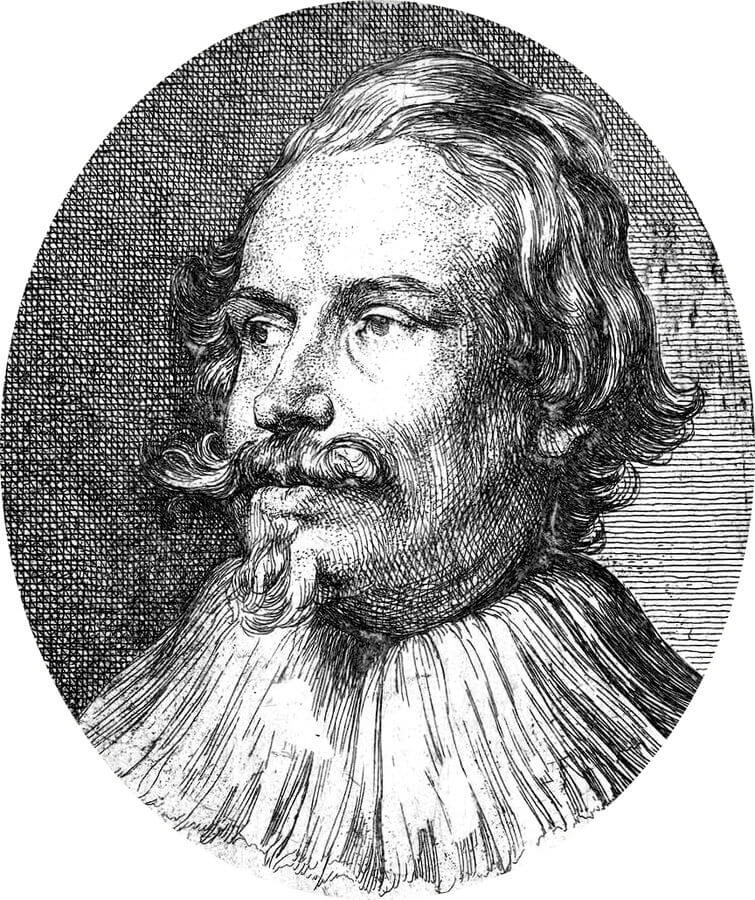
Paul de Vos, ca. 1630 – 1632, Anthony van Dyck, etching. Image Courtesy of Rijksmuseum Amsterdam.
Diana and Nymphs hunting deer, ca. 1635 – 1640, Peter Paul Rubens, Paul de Vos and Jan Wildens, Oil on Canvas. Image Courtesy of Rubenshuis.
Jan Wildens
Wildens was an Antwerp-based painter and a contemporary of Rubens. He specialised in religious and mythological subject matter, as well as landscapes and hunting scenes. He became a master in the Guild of St. Luke in 1604. He was a frequent collaborator of Rubens’ and was employed to paint the landscapes and backgrounds of Rubens’ paintings. Some notable contributions and collaborations include:
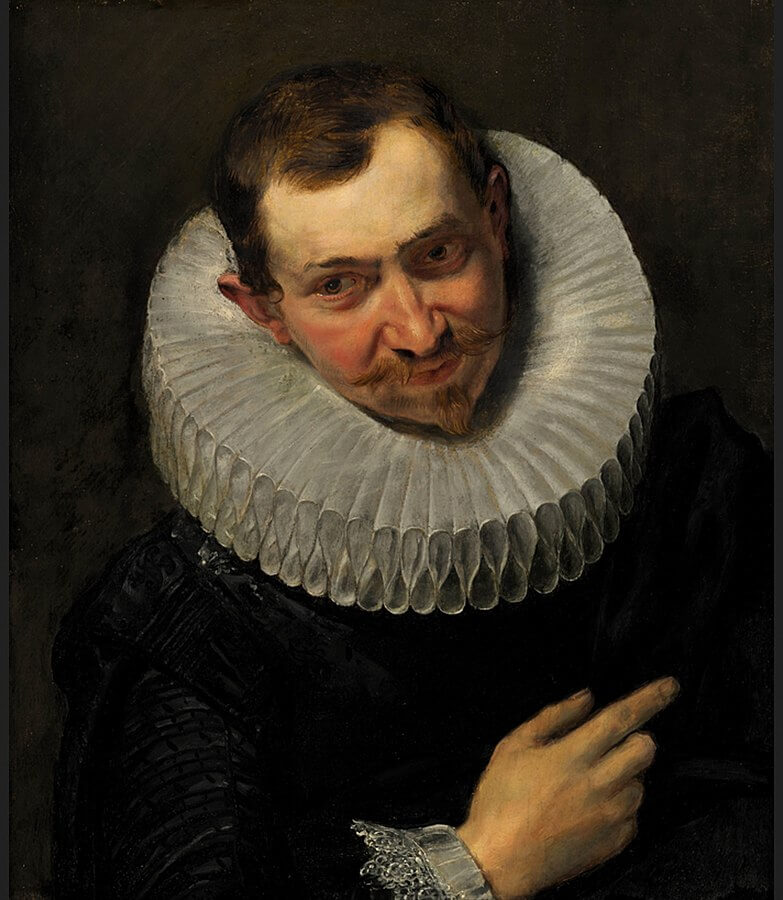
Portrait of the landscape painter Jan Wildens, ca. 1616 – 1617, Peter Paul Rubens, Oil on Canvas. Image Courtesy of Rubenshuis.
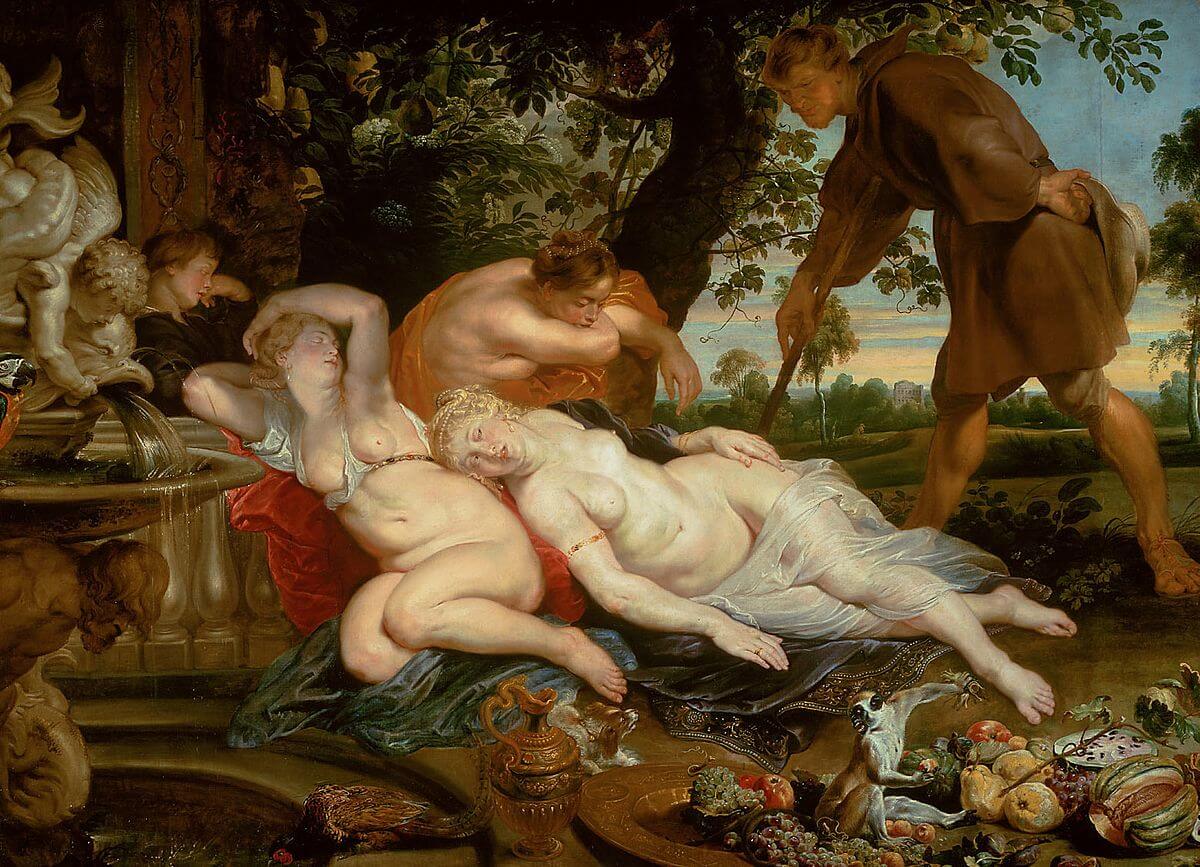
Cimone and Efigenia, ca. 1617, Peter Paul Rubens, Frans Snyders and Jan Wildens, color on canvas. Image courtesy of Kunshistorisches Museum.
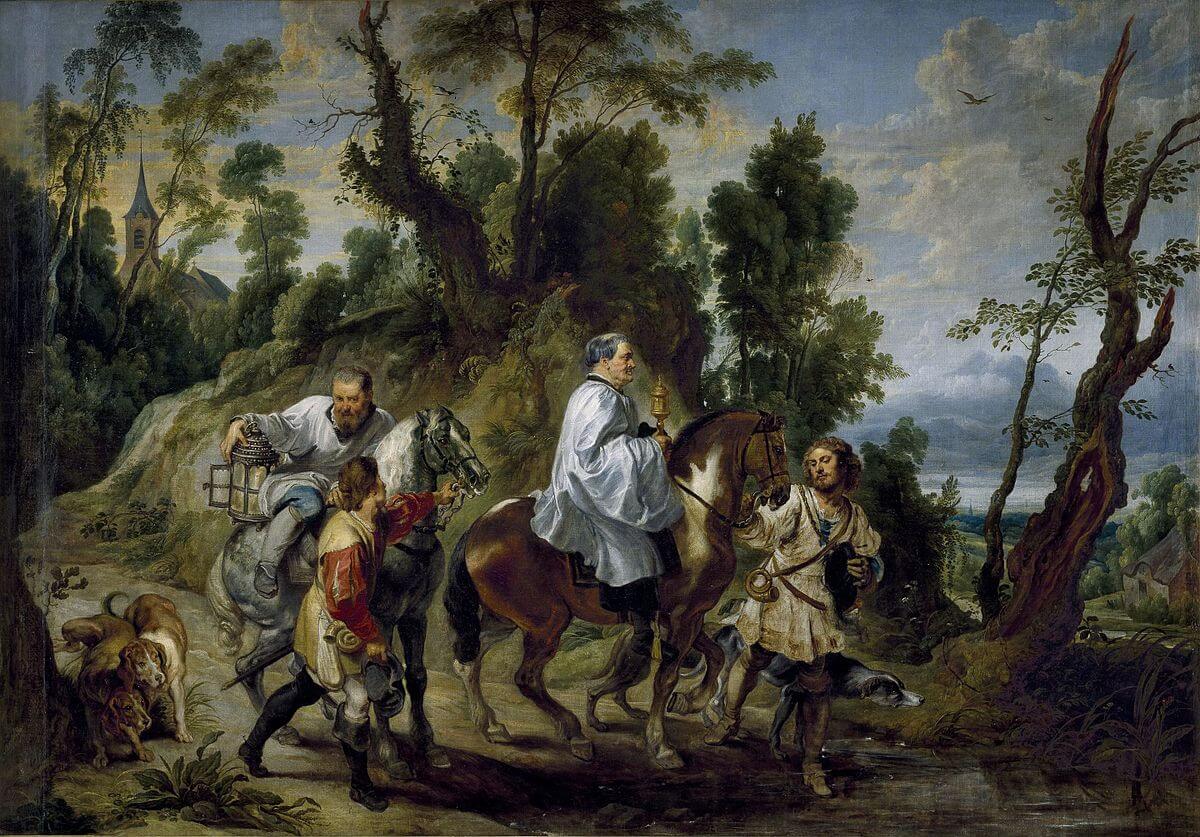
Act of Devotion of Rudolf I of Hapsburg, ca. 1625, Peter Paul Rubens and Jan Wildens, oil on canvas. Image Courtesy of Museo del Prado.
 Rubens Experts
Rubens Experts